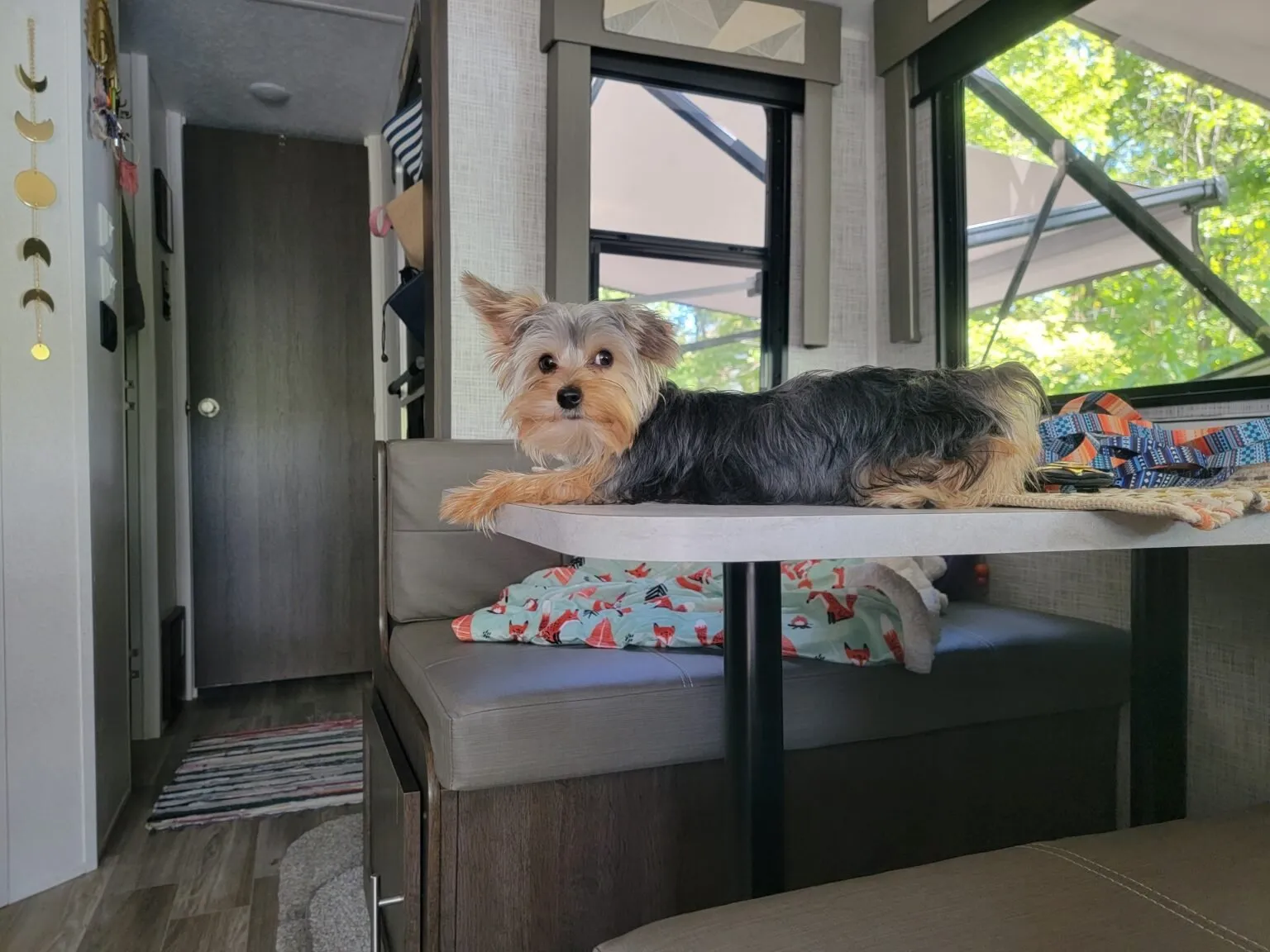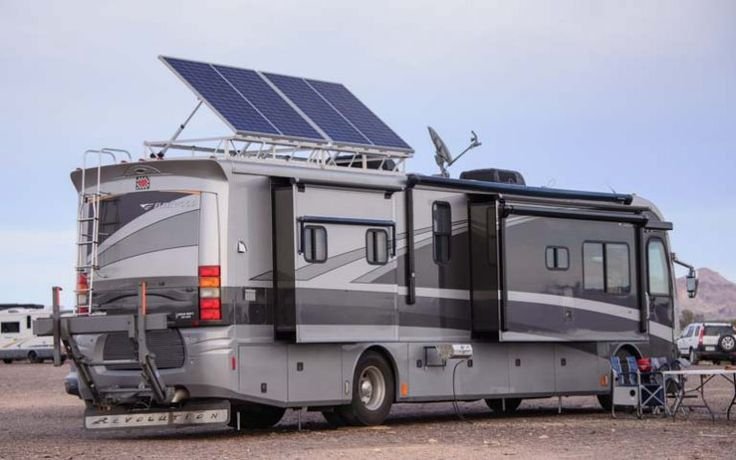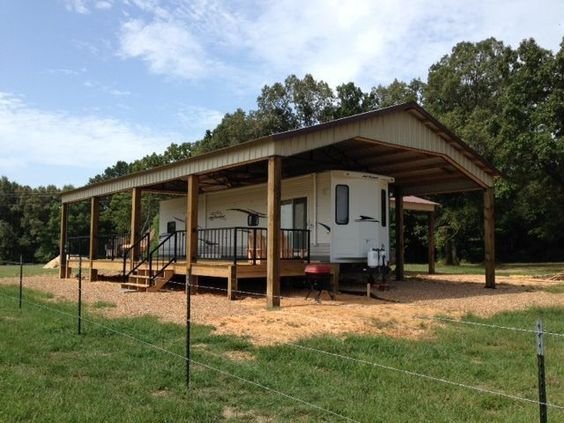RVing with pets opens up a world of adventure where families can explore new destinations without leaving their beloved companions behind. Many pet owners choose recreational vehicles specifically because they offer the freedom to travel with dogs and cats while maintaining familiar routines and comfort. However, successful pet-friendly RV travel requires careful planning and preparation.
The key to safe and enjoyable RV pet travel lies in proper preparation, understanding safety protocols, and establishing routines that work for both pets and their owners. From selecting the right gear and creating comfortable spaces to managing daily needs and handling unexpected situations, every aspect of the journey requires thoughtful consideration. Pet safety, comfort measures, and practical solutions for common challenges form the foundation of successful RV adventures.
This comprehensive guide covers essential preparation strategies, road safety protocols, campground navigation tips, and daily management techniques that experienced RV pet owners rely on. Whether planning a weekend getaway or extended travel, these proven approaches help create positive experiences for pets and their families while minimizing stress and potential problems on the road.
Preparing for RV Travel With Your Pets
Successful RVing with pets requires proper health documentation, essential gear, and gradual acclimation to the RV environment. These preparatory steps ensure both pet safety and travel compliance.
Health Checks and Vaccinations
Pet owners must schedule a veterinary examination within 30 days before departure. The local vet should verify all vaccinations are current, particularly rabies, DHPP, and bordetry for dogs.
Many campgrounds and state parks require proof of vaccination upon check-in. Travelers should request multiple copies of vaccination records and health certificates from their veterinarian.
Essential health preparations include:
- Current rabies vaccination (required in all states)
- DHPP vaccine for dogs
- Feline VRCP vaccine for cats
- Heartworm and flea prevention medications
- Prescription medications with extra supply
Microchip verification ensures pets can be identified if separated from owners. The vet should confirm the microchip functions properly and update contact information in the database.
Pet owners should also obtain contact information for emergency veterinary clinics along their planned route.
Packing Pet Essentials
Proper packing prevents stress and ensures pet comfort during RV travel. Essential items should be packed in easily accessible locations within the RV.
Food and water supplies:
- 7-day supply of regular pet food
- Collapsible food and water bowls
- Water from home (prevents digestive issues)
- Treats for positive reinforcement
Safety and comfort items:
- Secure pet crate appropriate for RV travel
- Comfortable dog bed or familiar blankets
- Leash and collar with updated ID tags
- Pet gate for sectioning off RV areas
The pet crate must be properly sized and secured to prevent movement during transit. Soft-sided crates work well for smaller pets, while larger dogs require sturdy plastic or metal crates.
First aid supplies should include bandages, antiseptic wipes, and any prescription medications. A pet thermometer and emergency contact list for veterinarians complete the medical kit.
Introducing Your Pet to RV Life
Gradual introduction to the RV prevents anxiety and helps pets adapt to the confined space. Start with short visits to the parked RV several weeks before departure.
Allow pets to explore the RV while stationary. Place their dog bed, toys, and food bowls in designated areas to create familiarity. Positive associations develop when pets receive treats and praise inside the RV.
Progressive training steps:
- 15-minute stationary visits
- 30-minute sessions with engine running
- Short drives around the neighborhood
- Extended practice trips
Practice crate time if pets will be crated during travel. The crate should feel like a safe space rather than punishment. Never use the crate for discipline during this training period.
Temperature control training helps pets adjust to RV climate systems. Run the air conditioning or heating while pets are inside to familiarize them with the sounds and air circulation patterns.
Ensuring Safety and Comfort on the Road
Creating a secure environment for pets during RV travel requires proper restraint systems, climate control monitoring, and designated comfort zones. Managing temperature fluctuations and preventing motion-related stress are essential for maintaining pet well-being throughout the journey.
Securing Pets During Travel Days
Pet restraint systems are mandatory for safe RV travel. Unrestrained pets pose serious risks during sudden stops or accidents. They can also distract drivers and become dangerous projectiles.
Seat belt harnesses provide the most secure option for dogs on the road. These systems attach directly to existing seat belts and distribute force across the pet’s chest during impact. Choose harnesses certified for crash testing rather than walking harnesses.
Travel carriers work best for smaller pets and cats. Secure carriers to the floor or seat using tie-down straps. Ensure carriers have adequate ventilation and remain stable during turns.
Crate systems offer another safe alternative. Install crates in areas with minimal movement during travel. Avoid placing them near slide-outs or areas that flex while driving.
Never allow pets to roam freely in the driver’s area. This creates dangerous distractions and prevents proper vehicle control. Designate specific travel zones away from pedals and steering mechanisms.
Temperature Monitoring and Climate Control
Temperature fluctuations pose significant risks to pet health during RV travel. Internal temperatures can rise rapidly, even on mild days. Proper monitoring prevents heat-related emergencies.
Install multiple thermometers throughout the RV interior. Digital models with remote sensors provide accurate readings from different zones. Place sensors near pet areas and sleeping spaces.
Ventilation fans help circulate air and reduce hot spots. Run fans continuously during travel and parking. Consider installing additional vents in pet areas for improved airflow.
Never leave your pet alone in the RV without climate control. Parking in shade provides only temporary relief. Temperatures can reach dangerous levels within minutes.
Portable air conditioning units offer reliable cooling solutions. Battery-powered fans provide backup cooling when shore power is unavailable. Cooling mats give pets direct temperature relief.
Monitor humidity levels alongside temperature. High humidity reduces pets’ ability to cool themselves through panting. Dehumidifiers help maintain comfortable conditions.
Setting Up a Pet-Friendly Space Inside the RV
Dedicated pet spaces reduce stress and provide security during travel. These areas should include familiar items and safety features. Proper setup prevents injuries and property damage.
Choose stable locations away from slide-outs and moving components. Avoid areas near the entry door where pets might escape. Select spots with good ventilation and natural light.
A quality dog bed provides comfort and defines the pet’s territory. Non-slip materials prevent sliding during travel. Washable fabrics simplify cleaning and maintenance.
Install baby gates to contain pets in designated areas. These barriers prevent access to dangerous zones while maintaining visibility. Choose gates with secure latching mechanisms.
Secure water and food bowls to prevent spills. Non-tip designs reduce mess during travel. Elevated feeders improve comfort for larger dogs.
Add familiar blankets and toys to create a comforting environment. These items carry home scents that reduce anxiety. Rotate toys to maintain interest during long trips.
Preventing Stress and Car Sickness
Motion sensitivity affects many pets during RV travel. Early intervention prevents escalation of symptoms. Proper preparation reduces travel-related anxiety and physical discomfort.
Gradual acclimation helps pets adjust to RV motion. Start with short trips around the neighborhood. Gradually increase duration as pets become comfortable with movement.
Face pets forward during travel when possible. This orientation reduces motion sickness symptoms. Avoid allowing pets to look out side windows while moving.
Limit food intake before travel days. Feed pets light meals 2-3 hours before departure. Provide small water amounts to prevent dehydration without causing nausea.
Natural calming aids include lavender sprays and pheromone diffusers. These create relaxing environments without medication side effects. Consult veterinarians before using supplements.
Maintain consistent routines to reduce anxiety. Keep feeding and walking schedules similar to home patterns. Familiar routines provide comfort in new environments.
Fresh air circulation helps prevent nausea. Crack windows slightly or run ventilation fans. Avoid strong odors and air fresheners that might trigger sickness.
Navigating Campgrounds and RV Parks With Pets
Successful RV travel with pets requires understanding campground policies, maintaining proper etiquette, and ensuring outdoor safety. These elements work together to create positive experiences for pet owners and fellow campers alike.
Researching Pet Policies and Amenities
Every campground and RV park maintains different pet policies that travelers must verify before booking. Weight restrictions, breed-specific legislation, and pet fees vary significantly between locations.
Most RV resorts charge additional fees ranging from $5 to $25 per night for pets. Some facilities limit the number of pets per site or restrict certain breeds entirely.
Key policies to research:
- Daily pet fees and deposits
- Weight and breed restrictions
- Vaccination requirements
- Pet supervision rules
Pet-friendly amenities enhance the camping experience considerably. Many RV parks now feature dedicated dog runs, washing stations, and waste disposal areas around the RV sites.
Dog parks within campgrounds provide safe spaces for exercise and socialization. Some facilities offer pet daycare services for extended day trips away from the campground.
Research online reviews and contact campgrounds directly to confirm current pet policies. Policies change frequently, and booking sites may contain outdated information about pet accommodations and restrictions.
Practicing Courteous Pet Etiquette
Pet etiquette maintains harmony between campers and ensures continued pet-friendly policies at campgrounds. Responsible pet ownership protects access for future travelers with animals.
Always clean up immediately after pets and dispose of waste properly. Many campgrounds provide pet waste stations, but travelers should carry their own supplies as backup.
Keep pets leashed at all times unless in designated off-leash areas. Even well-behaved animals can become unpredictable in new environments with unfamiliar sounds and scents.
Essential etiquette practices:
- Prevent excessive barking, especially during quiet hours
- Keep pets close to your RV site
- Never allow pets to approach other campers uninvited
- Control pets around communal areas like bathhouses and playgrounds
Noise control remains critical in close-quarters camping environments. Bring familiar toys and bedding to keep pets calm and quiet during evening hours.
Outdoor Safety: Fencing, Leashes, and Off-Leash Areas
Physical barriers and proper restraints protect pets from campground hazards like traffic, wildlife, and other animals. Most campgrounds prohibit permanent fencing but allow temporary containment systems.
Portable pet fencing creates safe boundaries around the RV without violating campground rules. Exercise pens and tie-out systems provide freedom while maintaining control over pet movement.
Safe containment options:
- Retractable leashes for supervised exploration
- Stake-out systems with swivel attachments
- Portable exercise pens for secure outdoor time
Never leave pets unattended on tie-outs or in exercise pens. Wildlife encounters and entanglement risks require constant supervision when pets are outside the RV.
Off-leash dog parks require careful evaluation before use. Check fence integrity, gate latches, and ground conditions for hazards like broken glass or toxic plants.
Monitor pet interactions closely in off-leash areas. Remove pets immediately if aggression or excessive rough play occurs with other animals.
Managing Daily Life and Special Situations
Successful RV living with pets requires establishing consistent routines for meals, exercise, and care while preparing for situations when pets must be left alone. These daily management strategies become especially critical during travel days and extended stays at campgrounds.
Feeding, Hydration, and Routine Care
Consistent Feeding Schedule Maintaining regular meal times helps pets adjust to RV life more easily. Feed pets at the same times each day, even during travel days when schedules might be disrupted.
Pack the same brand of food pets eat at home to avoid digestive issues. Store dry food in airtight containers to prevent spoilage and pest problems in the confined RV space.
Water Management Bring water from home or use bottled water initially, as different municipal water sources can upset pet digestive systems. Gradually transition to local water if staying long-term.
Keep multiple water bowls accessible throughout the RV. Pets may drink more due to stress or temperature changes in the confined space.
Grooming and Health Brush pets daily to manage dog hair accumulation inside the RV. Regular grooming becomes more important in smaller living spaces where hair spreads quickly.
Check paws daily for cuts, thorns, or hot pavement damage. Keep basic first aid supplies accessible for minor injuries.
Exercise and Mental Enrichment
Daily Exercise Requirements Walk the dogs multiple times daily, even on travel days. Plan stops every 2-3 hours during driving to allow bathroom breaks and short walks.
Research dog-friendly areas at each destination before arrival. Many campgrounds have designated pet areas or nearby trails suitable for exercise.
Mental Stimulation Provide puzzle toys and interactive feeders to prevent boredom in the confined RV space. Mental enrichment becomes crucial when outdoor time is limited due to weather.
Rotate toys regularly to maintain interest. Pack favorites from home but introduce new items to keep pets engaged during longer trips.
Travel Trailer Considerations Pets in travel trailers need extra attention during hitching and unhitching procedures. Secure pets safely away from moving parts and potential escape routes.
Leaving Your Pet Alone: When and How
Temperature Control Never leave pets alone without proper ventilation and temperature control. RVs heat up quickly, making air conditioning or fans essential even on mild days.
Monitor inside temperature with remote thermometers or pet monitoring systems. Set alerts to notify owners if temperatures become dangerous.
Time Limits and Safety Limit alone time to 2-4 hours maximum, depending on pet temperament and campground rules. Some facilities prohibit leaving pets unattended entirely.
Place “Pet Inside” window signs to alert others in emergencies. Keep local emergency vet contact information easily accessible.
Noise Management Use background music or white noise to mask outside sounds that might trigger barking. Consider bark collars for chronic barkers to maintain good relationships with neighboring campers.
Inform nearby campers about pet presence and provide contact information for emergencies during short absences.
Frequently Asked Questions
Pet owners often have specific concerns about traveling safely with their animals in recreational vehicles. These questions address essential packing requirements, safety protocols, legal considerations, and comfort strategies for successful RV adventures with pets.
What are the essential items to pack for my pet when RV traveling?
Pet owners should pack enough food and water for the entire trip, plus extra supplies in case of delays. Essential medications should be included with backup quantities to prevent shortages.
Comfort items include a familiar bed, cushion, or blanket to help pets feel secure. A sturdy leash, waste bags, and portable food and water bowls are necessary for daily activities.
Entertainment items like favorite toys help prevent boredom during long travel days. Familiar objects such as a cherished blanket or toy provide emotional comfort in new environments.
How do I ensure my pet’s safety while driving in an RV?
Pets must be secured during travel using a properly sized harness, pet seatbelt, or carrier. Unsecured animals risk injury during sudden stops or sharp turns and can distract the driver.
The restraint system should keep pets comfortable but snug to prevent excessive movement. Crates work well for crate-trained animals and provide a familiar sanctuary during travel.
Never allow pets to travel in a pull-behind camper or trailer. They should remain in the main RV cabin where temperature and safety can be monitored continuously.
What steps should I take to acclimate my pet to RV life?
Create a designated safe space within the RV using a soft crate or comfortable bedding. This area should be away from drafts, direct sunlight, and secure enough to prevent sliding during movement.
Introduce pets to the RV gradually before departure. Allow them to explore and become familiar with the space while stationary to reduce stress during actual travel.
Establish routines similar to home life including feeding times and sleeping arrangements. Consistency helps pets adjust more quickly to the confined living space.
What are the legal requirements for traveling with pets in an RV across state lines?
Pets must have current vaccination records, particularly rabies vaccinations, when crossing state boundaries. Some states require health certificates issued by licensed veterinarians within specific timeframes.
Identification requirements include collar tags with current contact information and consideration of microchipping for permanent identification. Recent photographs should be available if pets become lost.
Research individual state requirements before travel as regulations vary significantly. Some areas have breed restrictions or quarantine requirements that affect travel plans.
How can I manage my pet’s anxiety and comfort during long RV trips?
Schedule regular breaks every few hours to allow pets to stretch, exercise, and relieve themselves. These stops help reduce built-up energy and travel-related stress.
Maintain familiar routines and provide comfort items from home to create security. Keep the RV temperature between 68 and 78 degrees Fahrenheit for optimal comfort.
Introduce new environments gradually and watch for signs of anxiety or overwhelm. Allow pets to explore at their own pace while offering treats and praise for positive associations.
What practices should I follow for pet hygiene and cleanliness in a confined RV space?
Regular grooming becomes more important in small spaces to control shedding and odors. Pack appropriate grooming supplies including brushes, nail clippers, and cleaning wipes.
Establish designated areas for feeding and sleeping to maintain organization. Clean food and water bowls regularly and replace bedding frequently to prevent bacteria buildup.
Address accidents immediately using pet-safe cleaning products designed for small spaces. Proper ventilation helps control moisture and odors that can accumulate quickly in confined areas.




